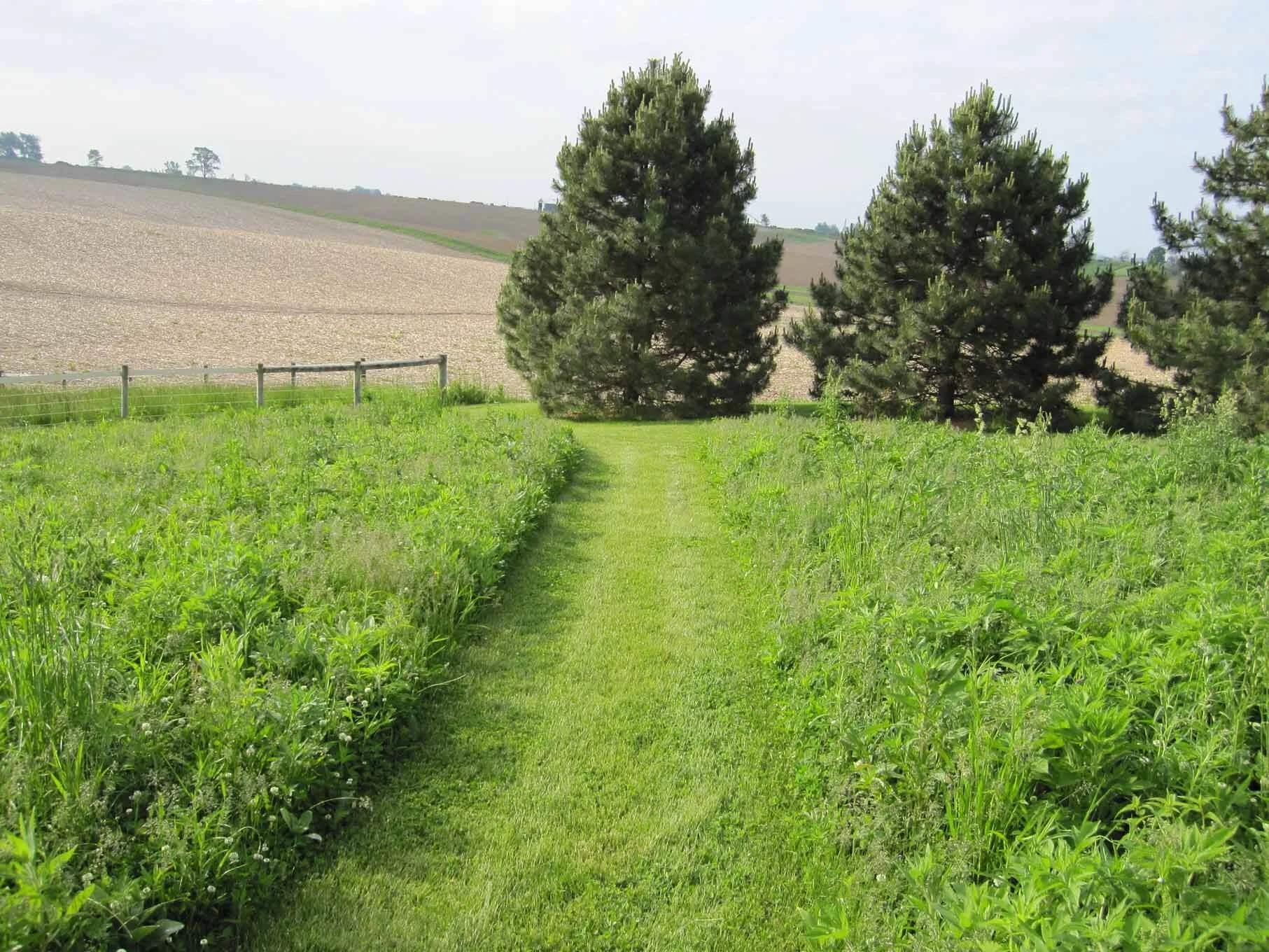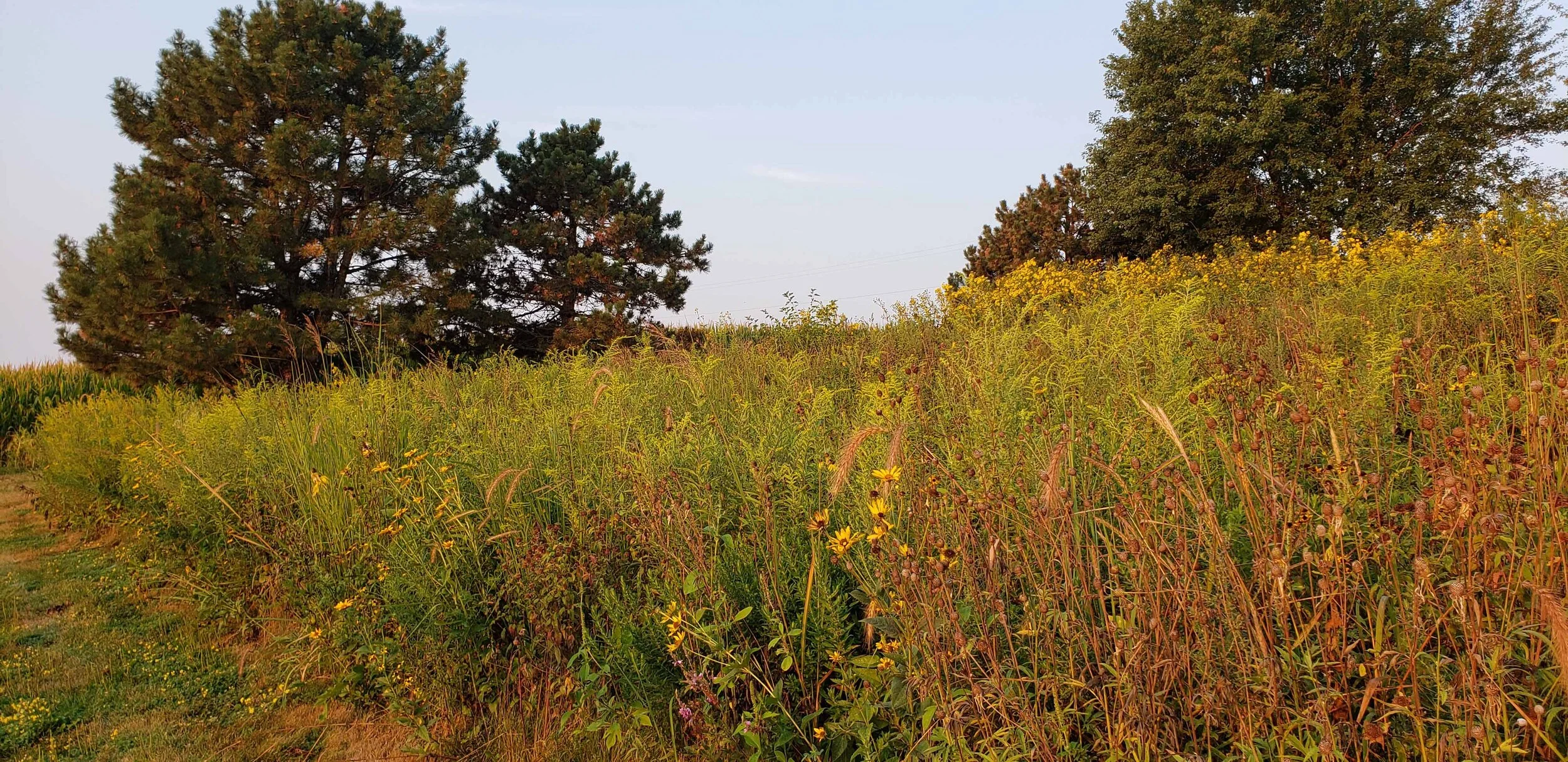How We Started our Prairie on the Hill
Middle section, Fifteenth Year
We had fallen in love with the prairie and wanted to plant a diverse prairie like the prairie that would have been here over two centuries ago. We had too much grass to mow on our hill but wanted to keep enough lawn for sledding in the winter. We chose a steep area far from the house to plant the prairie. We planted in sections over a few years.
If we removed the sod and seeded the prairie the chance of rain washing the seed down the hill was high. We decided, after a lot of reading and conferring with experienced native prairie people, to kill the sod with glyphosate. In two weeks, most of the grass had died. We spot sprayed the green areas and waited until that grass had died. The dead turf would prevent erosion. The next step was to mow the dead sod as short as possible and to rough it up, creating nooks and crannies for the prairie seed.
Middle section in its Second Year in May
Bottom section on Left in its Second Year in Spring
Prairie is seeded by broadcasting the mixture over a prepared area. Or, with larger areas, it is possible to use a special drill to plant the seed to the correct (but shallow) depth. We divided our seed into two buckets and added damp sand to each one and mixed the seed and sand together. Doing this prevents running out of seed before you have covered the area. We broadcast by hand in one direction and then crossed the area broadcasting again. We firmed the seed into the dead turf by driving our garden tractor over it. A sod roller works well.
Top section in its Third Year in May
Top section in its Third Year in Summer
From the Top, Third Year
We eventually seeded three parts leaving four-foot paths of lawn between them. We bought the seed from the Ion Exchange in Harpers Ferry, Iowa, where we have bought all our prairie seed. We have bought different mixtures. Choose a mixture prepared by your source rather than creating your own by looking through the photographs. Of course, if you have some favorites like butterfly weed and coneflower include them. The mixture needs to have 30 or more varieties of wildflowers and at least four varieties of grasses.
According to Carl Kurtz, “because prairie plants that evolved locally are adapted to the climate of your area, the seeds they produce are certainly the best choice.” For this reason, local ecotype seed is preferred. Try to order seed collected less than 100 miles from your location.
Kurtz believes that species diversity is most important and will give your prairie long-term stability. Climate change affects our seed and plant choices. Having a diverse mix will provide the prairie with the means to diversify over seasons to serve more wildlife. This happens through cross-pollination when insects move from plant to plant or the wind carries the pollen. Genetic diversity provides the necessary adaptation to changing environments.
Lower Path, Sixth Year for Middle Section
Middle and Top sections in Eighth Year
I love the native grasses and find that our mixtures could have had more. The grasses provide a structure and year-round interest. Whether erect or curved, these stems give the prairie substance. Birds use them as look out points and eat the seed and spiders build large webs between them. Dry grasses often remain all winter and into the next growing season. The one plant I would never include again is cup plant, Silphium perfoliatum. It has taken over part of our prairie and we have not been able to remove it. The other Silphiums are also tall, but not as aggressive.
Bottom of Prairie, Eleventh Year in September
Middle Path, Fifteenth Year in Early July
Bottom Looking Up, Fifteenth Year in August
View Across Yard, Fifteenth Year.
There are many information sources on planting and maintaining prairie. Here are two.
A Practical Guide to Prairie Reconstruction by Carl Kurtz, University of Iowa Press 2001
From Prairie Nursery in Westfield, Wisconsin, owned by Neil Diboll
prairienursery.com/media/pdf/seed-mix-establishment-guide.pdf












